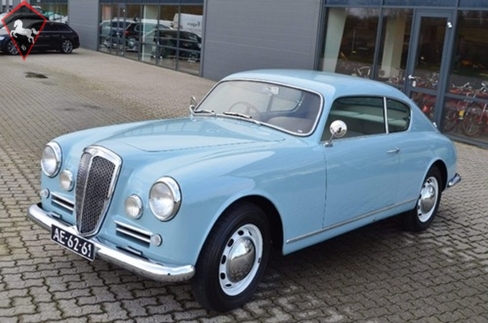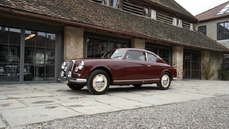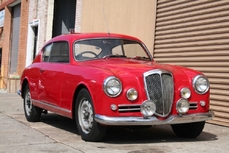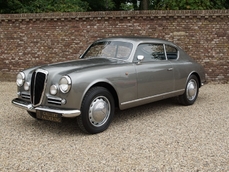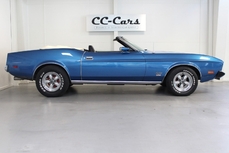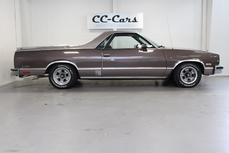Lancia Aurelia B20 GT 1954
General description :
Total restaureret, Ekstrem sjælden udbudt til salg, Køb din Pensions opsparing nu, ring for info
http://www.cc-cars.dk/UK/car.aspx?number=846301484
1954 Lancia Aurelia B20 GT is listed sold on ClassicDigest in Denmark by CC Cars for €172300.
Car Facts
Car type : Car Make : Lancia Model : Aurelia B20 GT Engine size : 2.5 Model Year : 1954 Location : Bodalen Vehicle Registration : Normal
Sold
Seller Information
Sold
People who viewed this Lancia Aurelia B20 GT also viewed similar Lancia listed at ClassicDigest
Other cars listed for sale by this dealer
About Lancia
Ah, Lancia, the Italian marque that danced on the edge of automotive brilliance! Let me take you on a journey through the captivating story of Lancia, a brand that embodies passion, innovation, and rallying prowess.Act 1: The Early Years (1906-1920s)
Lancia was founded in 1906 by Vincenzo Lancia, an engineering wizard with a flair for the extraordinary. The brand quickly gained a reputation for its precision engineering and innovative approach. The Lancia Alpha, introduced in 1907, was the first car to feature a narrow-angle V4 engine, setting the tone for Lancia's commitment to technical excellence.
Act 2: Innovation at its Core (1930s-1950s)
The 1930s saw Lancia pushing the boundaries of innovation with models like the Lambda, the first car to feature a load-bearing monocoque chassis. The Aprilia, introduced in the 1930s, showcased cutting-edge aerodynamics and a V4 engine, solidifying Lancia's reputation as a pioneer.
Act 3: Post-War Elegance (1950s-1960s)
After World War II, Lancia continued to dazzle with models like the Aurelia, the first production car to feature a V6 engine. It blended performance with comfort and elegance. The Flaminia followed, embodying luxury and advanced engineering.
Act 4: Rally Domination (1970s-1980s)
Lancia etched its name in motorsport history with an unparalleled rally legacy. The Lancia Stratos, a wedge-shaped wonder, dominated the rally scene in the 1970s, clinching three consecutive World Rally Championships from 1974 to 1976. The Delta Integrale, introduced in the 1980s, continued this rally reign with multiple championships.
Act 5: Struggles and Resilience (1990s-2000s)
The latter part of the 20th century brought financial challenges for Lancia, leading to collaborations with other automakers. Despite the difficulties, Lancia introduced models like the Thesis and the Ypsilon, showcasing its commitment to style and substance.
Act 6: 21st Century Reinvention (2010s-Present)
In the 2010s, Lancia faced a shift in strategy, focusing on the Ypsilon as its primary model. While production numbers dwindled, the brand maintained its reputation for distinctive design and comfort.
Epilogue: A Legacy of Passion and Innovation
Lancia's story is one of passion, innovation, and motorsport glory. The brand, with its groundbreaking designs, technological advancements, and rallying triumphs, has left an indelible mark on the automotive world. Lancia may have faced challenges in recent years, but its legacy lives on, celebrated by enthusiasts who recognize the magic woven into each Lancia creation. Finally, Here are some of the most important Lancia models that have left an enduring mark:
1. Lancia Lambda (1922-1931):
The Lancia Lambda is often considered a pioneering model, being the first car to feature a load-bearing monocoque chassis. This innovation set the stage for modern automotive design. The Lambda was available in various body styles and showcased Lancia's commitment to engineering excellence.
2. Lancia Aurelia (1950-1958):
The Aurelia, introduced in the early 1950s, was a groundbreaking model for Lancia. It was the first production car to feature a V6 engine, and it incorporated advanced engineering, including a rear transaxle and inboard rear brakes. The Aurelia set new standards for performance and comfort.
3. Lancia Flaminia (1957-1970):
Continuing Lancia's tradition of combining style with innovation, the Flaminia was introduced as a luxury sedan. It featured a V6 engine, a de Dion rear suspension, and avant-garde styling. The Flaminia further solidified Lancia's reputation for producing high-end, technically advanced vehicles.
4. Lancia Stratos (1973-1978):
The Lancia Stratos is an icon in the world of rallying. Born out of Lancia's rallying ambitions, the Stratos was purpose-built for competition. With its distinctive wedge-shaped design and a mid-mounted V6 engine, it became the first car to win the World Rally Championship three times consecutively from 1974 to 1976.
5. Lancia Delta (1979-1994):
The Lancia Delta is synonymous with rally success. It dominated the rally scene in the late '80s and early '90s, winning six consecutive manufacturers' titles in the World Rally Championship. The Delta's combination of performance, agility, and versatility made it an icon both on and off the rally stages.
6. Lancia Thema 8.32 (1986-1994):
The Lancia Thema 8.32 was a performance-oriented version of the Thema sedan, and it stood out for its collaboration with Ferrari. It featured a 3.0-liter V8 engine sourced from Ferrari, making it one of the few sedans with a Ferrari powerplant. This model showcased Lancia's ability to blend luxury and performance.
